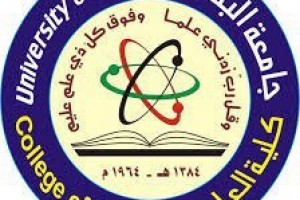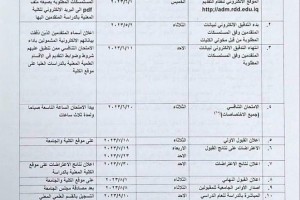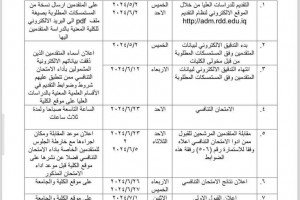
The University of Basrah organizes A doctoral dissertation defense entitled" Synthesis, Characterization and Biochemical Study of Some New Heterocyclic Compounds Based on Sulfa Drugs, Chalcones, Thio- and Selenosemicarbazide".
The presenter (Zainab Kadhim Zbala Al-Khazragie/PhD) demonstrates the most important objectives of studying (this study has been presented in four paths. Path-1 deals with the synthesis of a new series of 2-azetidinone compounds and 4-thiazolidinone or 4-selenazolidinone derivatives. Path-2 includes the synthesis of a series of 1,3,4-thiadiazoline and 1,3,4-selenadiazoline compounds. Path-3 focused on some synthesized heterocyclic compounds possess a cephem, selenacephem and 6-aminocephem rings. Path-4 included a synthesis of a new series of β-lactam compounds and thiazolidin-4-one derivatives. Some of biochemical applications have been used to evaluate or screen the toxicity, antimicrobial, antioxidant, anti-breast cancer, DNA fragmentation and fluorescence properties in vitro for some of these synthesized compounds). The results reached (The results pointed that the tested compounds containing selenium were less toxic than its analogues containing sulphur, synthesized compounds showed antibacterial properties, studied compounds showed a good antioxidant activity but at a lower rate than the standard compound BHT. Our results obviously revealed that the studied compounds had possess a strong activity with good IC50 against human breast cancer MCF-7 cells at a higher rate than the standard compound 5-fluorouracil, moreover, the results of DNA fragmentation study indicated that studied compounds displayed a potent genotoxicity against human breast cancer MCF-7 cells line as compared to 5-fluorouracil at concentration (100 µg/mL). The study recommends (Further studies should be conducted on same tested synthetic compounds to study their effect on other types of human breast cancer cell lines such as BT483, SKBR3, AMJ13 and other cell lines).







